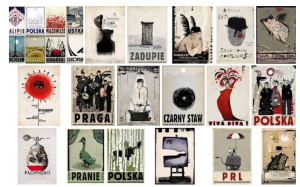Peter Whitehead was an English writer and filmmaker best-known for Wholly Communion (1965), Charlie Is My Darling (1966) and Tonite Let’s All Make Love in London (1967).
RIP Sylvia Miles (1924 – 2019)
Actress Sylvia Miles died. She was 94. I discovered her via the book Cult Movie Stars (1991) which I bought the year it came out. It describes Miles as a “quirky, funny, busty blonde New York character actress.”
The 1990s was the time of video rental stores and I after I had read Cult Movie Stars from cover to cover I scoured Antwerp looking for old films. So I saw a handful of Miles’ films including Heat (1972) [above], as well as many other Warhol films. Heat opens with the wonderful John Cale song, “Days of Steam” from the album The Academy in Peril (1972).
Sylvia Miles is mainly known for her part in Midnight Cowboy (1969) but she also starred in Denise Calls Up (1996), one of my canonical films.
RIP Dr. John (1941 – 2019)
Dr. John was an American singer-songwriter best-known for his single “Right Place, Wrong Time” (1973).
There are two songs from his debut album Gris-Gris (1968) on YouTube, “Gris-Gris Gumbo Ya Ya” and “I Walk on Guilded Splinters”, both have very nice percussion breaks.
Of note is the likeness of “Gris-Gris Gumbo Ya Ya” to the work of Tom Waits (think Swordfishtrombones, 1983), esp. the aforementioned percussion breaks.
Dr. John is one of these figures one could study for a week, there are so many connections. Below is him reading “Berenice” by Edgar Allan Poe.
Trivia: the beginning of “Right Place, Wrong Time” sounds like the beginning of “Spirit in the Sky” (1969) and the whole of “Right Place, Wrong Time” is very much reminiscent of a seventies groovy soul song with a chorus of “your love, your love” with something added like “is unforgettable” or “is extraordinary”, the title of which escapes me.
RIP Roky Erickson (1947 – 2019)
Roky Erickson was an American singer-songwriter, lead singer of the garage punk band The 13th Floor Elevators.
He is best-known for his song “You’re Gonna Miss Me” (1966) which was featured on the compilation Nuggets: Original Artyfacts from the First Psychedelic Era, 1965–1968 (1972).
SHOW MORE
RIP Doris Day (1922 – 2019)
Doris Day was an American actress and singer, a vivacious blonde with a wholesome image, she was one of the most prolific actresses of the 1950s and 1960s.
Dubbed the “eternal virgin”, she thrived in “no sex sex comedies” full of double entendres and sexual innuendo in the final days of the Hays Code-era but her popularity waned with the arrival the more explicit films of the sexual revolution.
RIP Tim Conway (1933 – 2019)
Tim Conway was an American actor and comedian.
RIP Bruce Bickford (1947 – 2019)
Bruce Bickford was an American animator, who worked primarily in clay animation. From 1974 to 1980, he collaborated with Frank Zappa.
Bickford’s animation was featured extensively in the Frank Zappa videos Baby Snakes and The Dub Room Special.
Zappa also released a video titled The Amazing Mr. Bickford, which was entirely composed of Bickford animations set to a soundtrack of Zappa’s orchestral music.
RIP Jean-Pierre Marielle (1932 – 2019)
Jean-Pierre Marielle was a French actor.
I have very warm recollections of the film Coup de Torchon (1981).
In the scene above Marielle is shot by Noiret.
There is a complete version of the film … Comme la lune (1977), a period piece of 1970s French mores.
RIP Dave Samuels (1948 – 2019)
Dave Samuels was an American percussionist known for his work with the jazz fusion group Spyro Gyra.
His composition “New Math” (1988) was included on Joe Claussell’s compilation Music… A Reason To Celebrate (2001).
He is one of those unsung heroes like Daniel Ponce, another percussionist who died in 2013 but whose death only came to my attention this February.[1]
RIP Ryszard Kaja (1962 – 2019)
Ryszard Kaja was a Polish painter, poster artist, stage designer, and costume designer.

Kaja was new to me, but his work seems like it comes straight of the post-war era, the height of the Polish film poster age.
